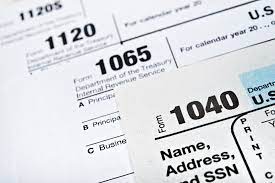Whether you’re a young, aspiring entrepreneur or a successful leader in academia, you depend on your customers and clients to pay on time, every time, and you need straightforward policies and processes to make that happen. If your customers are late with their payments, your business has to handle the situation with kid gloves because the last thing you want to do is lose a customer. Here are some tips for how to tackle late payments without offending your clients.
By Julie Morris, Guest Contributor and Author
Attempt to Avoid Late Payments in the First Place
In a dream world, your customers will always pay on time and you’ll never have an issue, but that is not reality. However, you can get as close to that as possible by creating a clear and concise payment policy and placing it on your website and your invoices. Yonyx points out that this policy should list all acceptable payment methods and spell out your terms, such as when a payment will be considered late and penalties if a late payment does occur.
Your payment policy should also be clearly stated in all documents that your client or customers receive when they first start working with your company. If the amount of money in question is significant, you may want to work with an attorney to write up a contract. Be sure to work with the business partner during this process so that the document is fair to both parties.
The point is that you want something to point to if a customer is late with the hope that they will understand their obligation and complete the payment ASAP. When customers or clients are late with payments, make sure you’ve sent the invoice to the right person, coordinate your invoicing with the customer’s billing cycles, and/or offer a discount for quick payment. You can also spruce up your invoices to make them more memorable by using a free invoice generator to create a branded invoice that leaves a more professional impression.
It is also a smart idea to invest in payroll software that can properly process and organize payments so you know which clients have paid and which have not. The last thing you want to do is accuse a customer of being late when you actually have received their payment and it slipped through the cracks.
Another way to ensure timely payments is to make it easier for your clients and customers to pay you. When you accept payments through your app, you’ll simplify the payment process, but you need to ensure that your customers’ sensitive financial information is protected. Fortunately, you can use a tool to authenticate bank account information for secure payments.
Polite Follow-Ups
Once you realize that a payment is late, it is time to send a follow-up, but remember you do not want to be overly demanding or threaten litigation at this point. Start by sending an email that reminds the customer of the item you sold or service you completed and the cost for that work, and remind them that they have a past due payment.
If you do not get a response, this may be a good time to call the client’s company and inquire with a different employee about how to be paid. In some cases, the person who requested the service is not the same individual that handles invoices, so ask for the billing department just in case.
If a phone call is required for the follow-up, Practice Ignition suggests keeping it nice and polite. Phrases like “this is a friendly reminder” and “I’d appreciate it if…” are a good way to start. If the customer states that they don’t have the funds to pay the bill in full, you might consider allowing a partial payment or creating an alternative arrangement that fits both of your needs.
Make the Payment Process Easier
Organizations that are finding that they have payments arriving late on a constant basis may want to look at their payment processes and make them simpler to use for the customers. Give your clients multiple avenues to make their payments, be it over the phone, through a web portal, or by mail.
You may also consider sending out automated reminders to your customers. These can be sent out a few days prior to a due date, on that day, and a week after the due date if payment is not made. By receiving automated messages that are sent by a computer, your customers will know that this isn’t a personal attack. Another benefit of setting automated reminders is that you will never forget to ask for a payment, and sometimes, that can be half of the battle.
If you are looking to keep your organization running on full steam, get the payments you’ve earned through the tips above.
About Julie Morris
Julie Morris is a life and career coach. She thrives on helping others live their best lives. It’s easy for her to relate to clients who feel run over by life because she’s been there. After years in a successful (but unfulfilling) career in finance, Julie busted out of the corner office that had become her prison.
Today, she is fulfilled by helping busy professionals like her past self get the clarity they need in order to live inspired lives that fill more than just their bank accounts. When Julie isn’t working with clients, she enjoys writing and is currently working on her first book. She also loves spending time outdoors and getting lost in a good book.
Improve your company’s performance and decision making with services from BRP Onesta. Find out how






